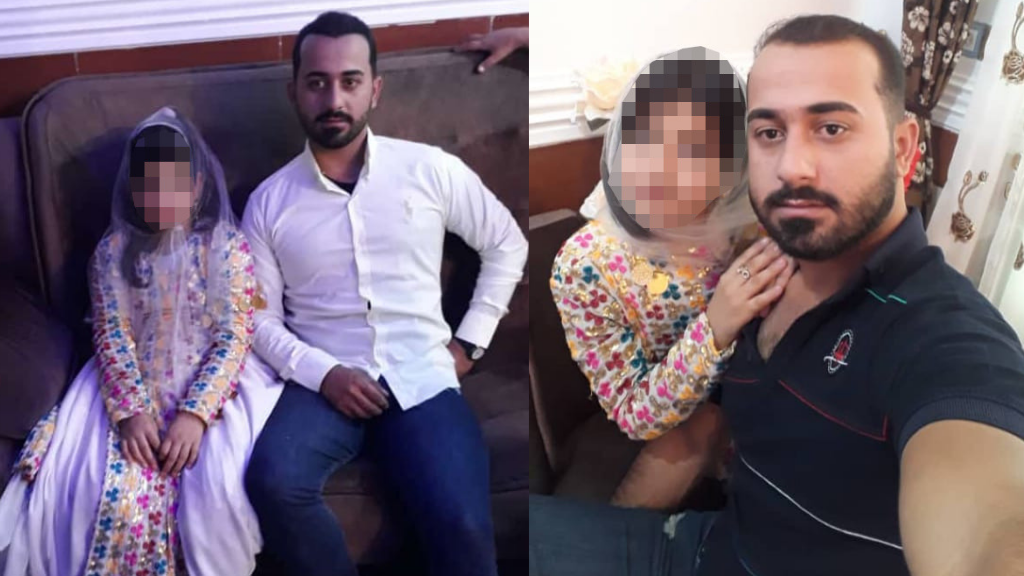


“For the 70,000 young brides who die every year as a result of pregnancy or childbirth complications, early marriage is a death sentence.” This was the fundamental point made in a statement made by Humanists International at the UN Human Rights Council last week.
During a discussion of a United Nations report on the maternal mortality rates across the world, Humanists International’s Director of Advocacy, Elizabeth O’Casey, highlighted the link between the prevalence of child marriage and high maternal mortality rates.

Stills and photos of a “child marriage” in Iran, 2019. The “marriage” was subsequently annulled. But some figures suggest that more than 1 in 20 “brides” in Iran are under 15.
She pointed out that pregnancy and childbirth are dangerous for child brides:
“Girls who give birth before the age of 15 are five times more likely to die in childbirth than girls in their 20s,” and that “complications in pregnancy and childbirth are the leading cause of death in girls aged 15-19 in low- and middle-income countries.”
The statement also condemned the recent case of an 11-year old Iranian girl, living in a poor and rural community, being forced to marry her 22-year old cousin.
The statement follows in full below:
42nd Session of the UN Human Rights Council (9th – 27th September 2019)
General Debate Item 3
Elizabeth O’CaseyChild marriage and maternal health are inextricably linked. Evidence shows that girls who marry before 18 are more likely to experience unwanted pregnancy, are vulnerable to sexually transmitted disease, and are at higher risk of maternal mortality.
Pregnancy and childbirth are dangerous for child brides: Girls who give birth before the age of 15 are five times more likely to die in childbirth than girls in their 20s; complications in pregnancy and childbirth are the leading cause of death in girls aged 15-19 in low- and middle-income countries.
Between 2010 and 2020 it is estimated that 142 million girls will marry as children. In brief: for some 70,000 young brides who die every year as a result of pregnancy or childbirth complications, early marriage is a death sentence.
This month, a video emerged showing an 11-year-old girl, Fatima, marrying her 22-year-old cousin in rural Iran. Fatima is just one example of many. In Iran, if families want to marry off a daughter who is 12 or younger, they can ask a judge to declare them “intellectually mature” enough for marriage.
The Council should look at reducing child marriage in tandem with maternal morbidity. Work on identifying the social determinants of child marriage, including factors such as poverty, insecurity, cultural and religious norms, traditional roles of wives and mothers, and gender inequality, is very much needed.
Reducing child marriage could accelerate efforts to reduce maternal mortality, as well as serve to protect millions of girls from a host of human rights abuses the practice of child marriage brings with it.